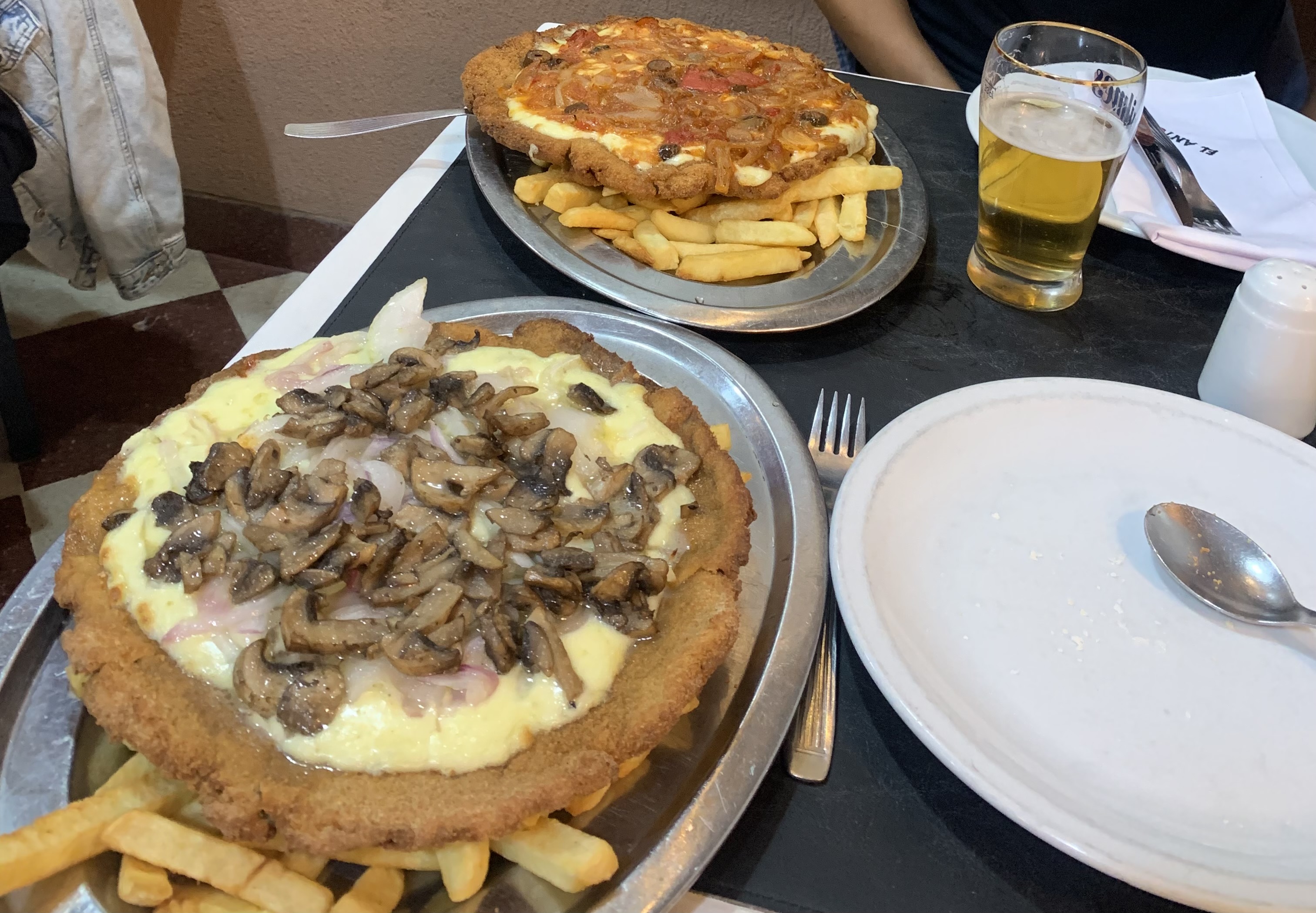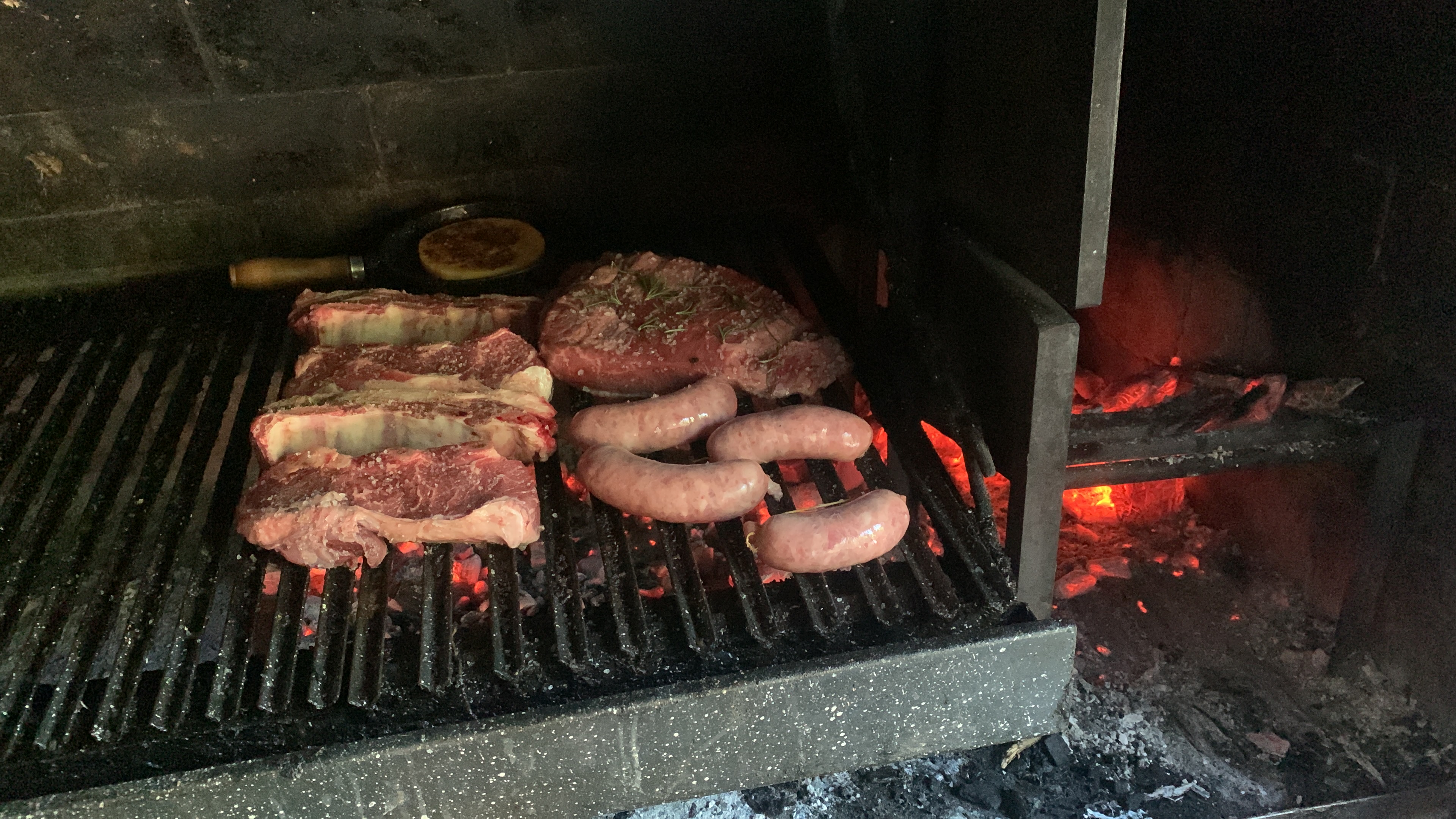
As I was chatting with a friend the other day about his upcoming semester abroad, he asked me what the food was like during my own study abroad experience in Buenos Aires, Argentina. Having grown up and shared many burritos with me, he knew that I was a lover of all things Latin American, and he could therefore predict what my response would be. However, like most people from the United States, my friend lacked awareness of some of the more unique gastronomic traditions that exist in Argentina. To both my and my friend’s disbelief, the country is not filled with spicy chilis, rice and beans, or much flavor at all. Rather, it is dominated by pizzas, deep-fried milanesas, and the largest amount of beef that I have ever seen or eaten in my life.
This sets Argentina apart from every other South American country and can be explained by the large number of Italian immigrants who came to Argentina towards the end of the 19th century. In addition to pushing the culinary landscape away from more typical indigenous foods, like stews or tamales, these new Argentines changed the language to what is now known as “Lunfardo,” while also influencing Argentina’s fashion scene. The highest concentration of Italians ended up settling in Buenos Aires, the city in which I spent my fall semester, and, as a result, I saw first-hand just how much Italian culture had influenced the local cuisine.
The first thing I was startled by was how many pizza places I came across during my first drive through the city to my homestay. These pizza joints were unlike those I had seen in NYC; most were substantial restaurants, as opposed to smaller counters. I went with my program to a well-known spot in the city during one of those first weeks and immediately noticed how different Argentine pizza was. The crust was relatively thick, and every single iteration of toppings would come complete with an absolute overflow of cheese. It was the opposite of the thin-crust, brick oven delicacy that Americans fawn over these days.
Though I ultimately didn’t eat a ton of pizza during my five-month stay, I was still blown away by the Italian and European influence present across nearly every part of Argentine cuisine. I even heard a story (and barely believed it) about a friend’s host sister warning her mom to “not put too much black pepper” on a dish. The “asados” (Argentine barbecues) featured beautiful cuts of meat that were tasty and luxurious, but usually devoid of much seasoning. The steaks were always massive, as were most of the main dishes. Most surprising was the Argentine edition of loaded fries which were served dripping with cheese, pounds of bacon, and sometimes even a hearty helping of shredded meat.
What affected me most in my first month was that virtually no food—and nothing close to protein—was eaten for breakfast. Most Argentines simply had coffee and maybe a few “medialunas.” This smaller, butter-glossed version of a croissant was tasty at first but became hard to eat every day. To make up for this less-than-filling breakfast, a “merienda” is inserted around 5:00 p.m. to 6:00 p.m. to act as a fourth meal, while dinner gets pushed back into the 9:00 p.m. to 10:00 p.m. hour. I had no trouble adjusting to this schedule of eating, since I would just go out for an extra meal during the day. My bank account constantly glared at me, but the dollar-favoring exchange rate ultimately let me gorge my way through Buenos Aires.

As I became more accustomed to Argentine eating habits, I began to understand the intricacies of the traditions to which every family adheres. The “asado” is the all-purpose feast that can be served at any occasion (birthday, funeral, marriage, and even just a regular old Sunday). My host mother schooled me on the exact way to prepare the barbecue by throwing me right on grill duty one Sunday morning. As I fumbled with the carbon chunks, she gently took my arm and guided me through layering the black coals and the newspaper, explaining what size the carbon needed to be when I moved the red-hot pieces under the grates. This was the body of the “quincho,” where the meat would be flavored and cooked through with the perfect crust, salt ratio, and tenderness.
Much like their passion for soccer, culture, and language, Argentines take a huge amount of pride in the food and drinks that they consume. You can’t shame them for not eating spicy food, or not seasoning their meat enough; they’ll tell you that the spice is bad for their stomachs and that the meat has enough flavor itself. The names that characterize their cuisine—the “milanesa,” the “muzza,” the “maté”—are all banners of such pride that they wear across their chests and will defend to the death. Italians came to Argentina relatively poor, and although communities have formed across Buenos Aires without much regard for their countries of origin, their defense of the country’s distinct culture seems partially rooted in their cuisine’s humble origins.
While I wasn’t head-over-heels for the cuisine, I loved the culture of eating and the ways in which different restaurants were set up. You could walk into any “parrilla” (grill) and tell them the cut of meat that you wanted for your sandwich and then chat with the guy as he cooked you up a chorizo, a “lomo,” or even just some plain chicken. Even the most humble of these sandwich vendors, with only a tiny truck to their name, would always have homemade chimichurri and “salsa criolla” sitting in small bowls, ready to be used as a garnish by their customers. Meanwhile, at the fanciest, most traditional restaurants, the waiters were incredibly animated and keen to share their favorite items, possibly because they had grown up eating the very same foods that their restaurants were serving. Like everything Argentine, there was an unexplainable passion and vibrance to their cuisine, and even though it didn’t pop my taste buds as much as a good ceviche, I still fell in love.
I loved to go on runs around my neighborhood, the commercial “barrio” of Villa Crespo. One of these runs took me through the beautiful Parque de los Andes. On the way back, I always ran down Av. Corrientes, dodging pedestrians and trying to stay within my 30-minute goal. Located around seven minutes away from my house, was a “parrilla.” It wasn’t particularly distinguishable from any other, but it emanated glorious smells from the grill that sat outside of the restaurant, a grill that was always manned by a kid about my age in shorts and a tank top. One day I finally caved in, ending my run at about 25 minutes and ordering a “choripan” (chorizo sausage on a roll).
The grill-man cooked it right in front of me as a spring breeze blew across my sweaty face. He then gave the sausage to me on a paper towel with instructions to take whichever of the sauces I wanted from the small table in front of him. With my fingers sticky from the already-grease-soaked towel, I spooned their chili-flecked chimichurri and a hearty ladle of “salsa criolla” onto the bottom roll, mushed the top roll with the sausage down, and took an enormous bite without even waiting to sit down. The delicious meaty smoke of the chorizo was balanced by the tangy salsa and the oily, salty chimichurri. As juice dribbled down my chin, I gave a grinning thumbs up to my new friend on the grill. It was at that moment that I felt truly Argentine.
Lewis Woloch can be reached at lwoloch@wesleyan.edu.


Leave a Reply